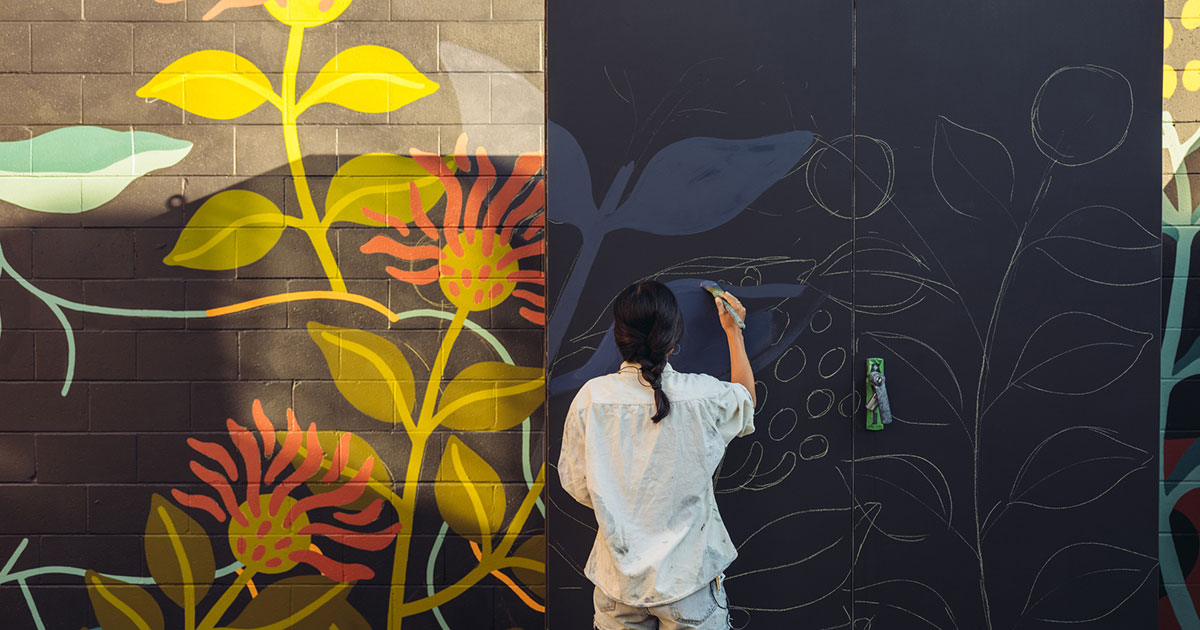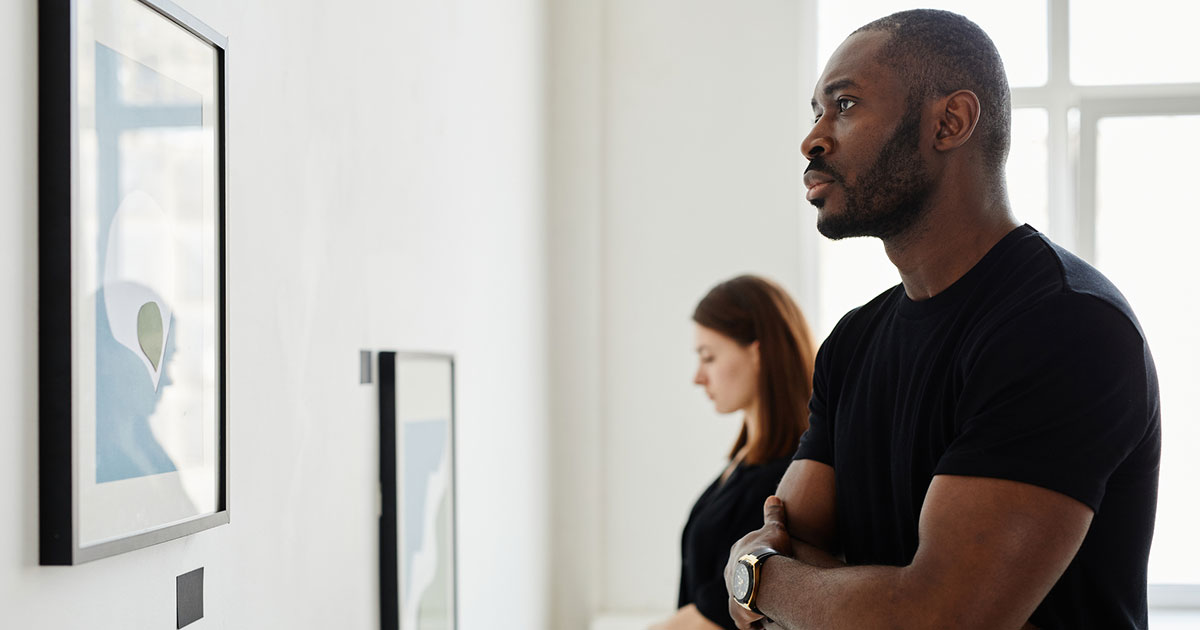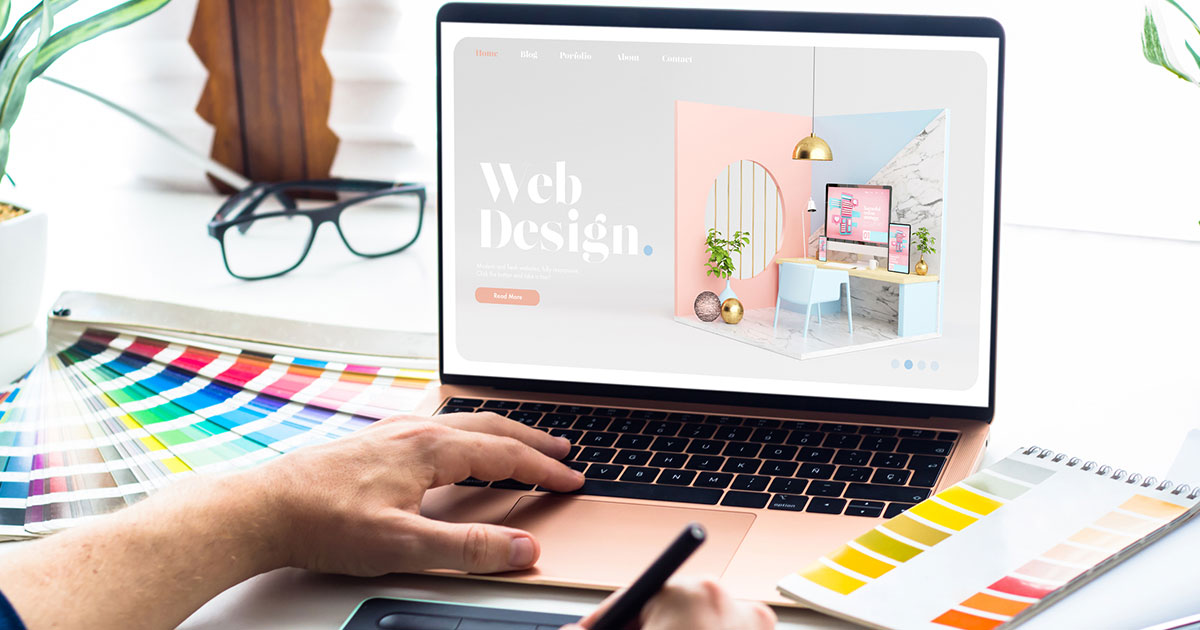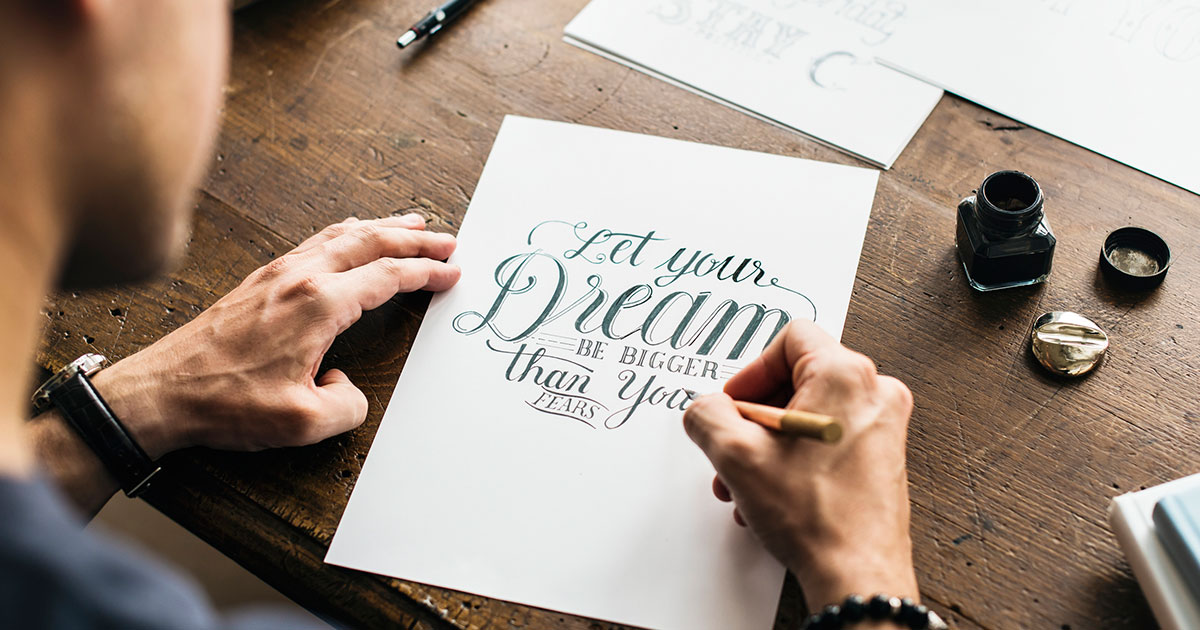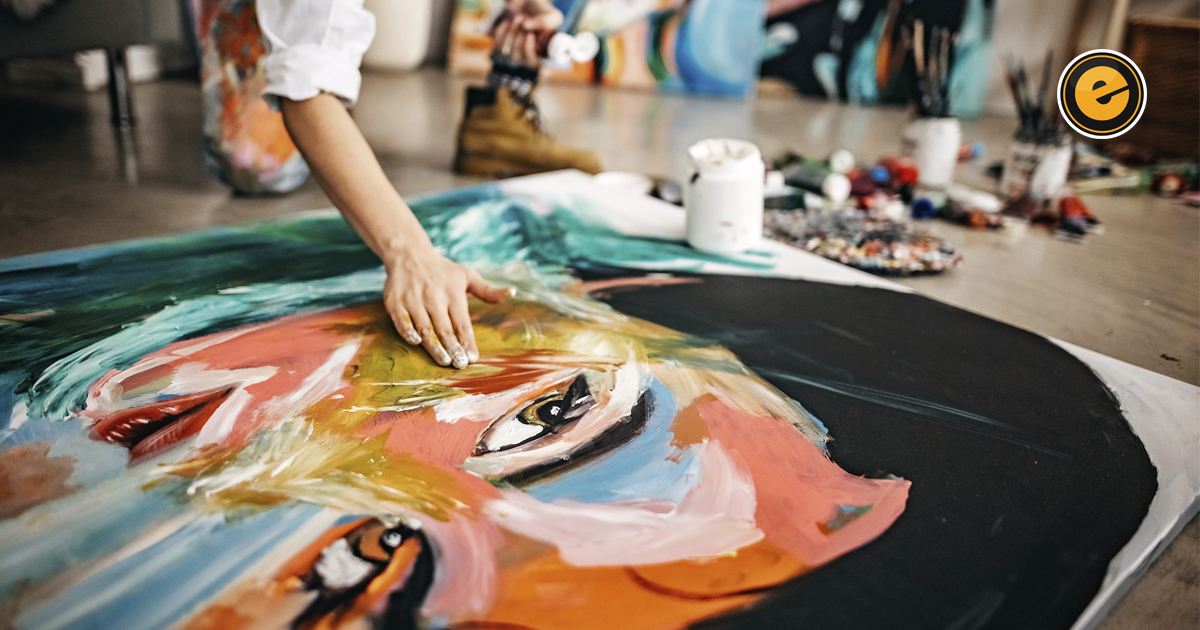
Most of us believe that art is important on some level. It can make us feel things, and sometimes it can even change how we see the world. But what is its purpose—why do humans need art? And does it need a purpose at all? These are the thought-provoking questions that have been asked for centuries, and the world still grapples with them today. By fully understanding the various purposes of art—all its potential applications and implications—we can better appreciate the value of art in our own lives.
What Is Art?
You might be asking yourself, “What is art?” Even that fundamental question is a personal, subjective one. Still, we must attempt to define art before we try to talk about it. Art is a form of expression that uses various mediums to communicate ideas, thoughts, and feelings. That is a necessarily broad definition because art has so few concrete guidelines and can therefore take almost limitless forms. It can be visual, auditory, or performed. It can be static or dynamic. It can be experienced alone or can be something with a social, group, or interactive element.
Examples include:
- Visual art: painting, sculpture, photography, architecture, graphic design
- Auditory art: music, poetry, sound design
- Performed art: theater, dance, circus
A good way to think about art is as a conversation. The artist is expressing something that they want to share with the world, and it’s up to everyone else to interpret the message. For the art to have its intended impact, the artist and audience often need to both exhibit some level of emotional vulnerability, just like a heartfelt conversation. Sometimes these conversations are subject to misunderstandings like any others.
A piece of art might mean something completely different to most of its audience than what the artist intended. This is not inherently good or bad but merely part of the process of art appreciation and, for the artist, artistic growth. Some believe a true artist is one who is always sincere in their work, although subversive art forms like satire and parody can effectively blur those lines.
So, Why Do We Need Art?
There are many reasons why we need and benefit from art, but here are just a few:
- Art can be therapeutic: We all experience emotions and feelings, both positive and negative. Art can be a way of expressing these emotions and feelings in a healthy way. It can help us to understand them and deal with them in a productive way.
- Art can help us to see things differently: Art is a form of expression, and it has the power to change the way we see things. It can help us to think about issues or topics from a different perspective than what’s normally presented to us in everyday life. For example, art can bring awareness to social justice issues and help us understand why they are important.
- Art can be a source of inspiration: We can be inspired by art to do great things. It can motivate us to be creative and to think outside the box.
How Does Art Impact Culture?
Culture is the way that a group of people live and interact with each other. It includes the things that they value and the traditions that they follow. Art is both a reflection of culture and a vital aspect of it. One of art’s most enduring purposes is to communicate cultural values and traditions. In the historical or anthropological view, art also creates a useful record of the aesthetic values of the particular era and culture in which it was created. Art can also help to shape culture by introducing new ideas and perspectives. This feedback loop by which art and culture affect one another, in turn, has essentially been active since the dawn of human civilization.
There are many specific ways, both large and small, that art can impact culture and vice-versa, but here are a few key concepts:
Cultural Values
Art can be used to communicate cultural values. It can be a way of sharing information with others, teaching them about the things that are important to you and your culture.
Cultural Preservation
Art can be used to preserve culture. It can help to keep traditions alive and pass them down from generation to generation.
Introduces Change
Art can be used to shape culture. It can introduce new ideas and perspectives that can change the way people think about their culture.
These components of culture are constantly changing and evolving, and art is a big part of that. It helps to shape the way we think about ourselves and our world, and it’s an important part of our cultural heritage.
Different Opinions on the Purpose of Art
There are many different opinions on the purpose of art, and not everyone agrees on what it is or why we need it. Because there is such a diverse ray of opinions on the purpose of art, it signifies that there is no correct answer. Art is a very personal thing, and everyone experiences it in their own way.
Some purposes people believe art has included:
Source of Inspiration
Some people believe that art is meant to inspire us and motivate us to do great things. When we experience art, it can make us feel something inside that prompts us to think about our own lives and how we want to live them. This influential power can help us to overcome obstacles and achieve our goals.
Source of Entertainment
Some believe that art is meant to entertain us. It’s a way to escape from the everyday stresses of life and relax for a while. Art can be enjoyable and fun, and it can help us to unwind and de-stress. A popular example is theater art, which can take us on a journey to another world while keeping us entertained the entire time.
Source of Information
Some believe that art is meant to educate us and teach us about the world around us. It can be a way of sharing information with others, teaching them about the things that are important to you.
A Window into Other Cultures
Some people believe that art is a way to learn about other cultures. It can be used to introduce us to new ideas and perspectives that we wouldn’t normally experience. Art can help us to understand different cultures better.
Source of Knowledge
Some believe that art is meant to teach us about the world around us and ourselves. It can be a way of sharing information with others, teaching them about the things that are important to you.
Form of Communication
Others believe that art is a form of communication that allows us to express our feelings and emotions. It can be used as a way to communicate with others, even if we don’t share the same language. Art can be a way to express ourselves, and it’s a great way for us to connect with others who have similar interests and experiences.
A Way to Pass Time
Some believe that art is a way for us to pass the time. It can be something to do when we’re bored or don’t have anything else to do. Art does not have to be created for the sake of its audience—or to have an audience at all. There are many different types of art, and each one can be enjoyable in its own way.
A Way to Connect with Others
Some believe that art is a way for us to connect with others. It can be a way for us to share our experiences and ideas with other people, which can help them feel less alone in the world. Art can be a great way for us to connect with others who have similar interests and experiences.
A Source of Beauty
Some believe that art is primarily a source of beauty. It can be something that makes us feel good and reminds us to appreciate the world around us. This can take form in many ways, from a painting to a sculpture, an architectural building, a makeup artist’s work, and just about anything else you can think of and admire.
Even with a long list of various purposes, this is not a complete and exhaustive list. There are many other roles that art can serve in our lives and communities, and everyone has their own opinions on these ideas. The key concept to remember is that art can affect each of us in a multitude of different ways, and anyone can appreciate it for what it is–regardless of what our personal opinion of art’s purpose might be.
What is The Purpose of Art in Web Design?
In the world of web design, art can play several different roles. It can be used to create an attractive and appealing website, to make the website more user-friendly, to help convey the message of the website, or to simply make it more visually appealing. Art can also be used to create a unique and memorable website that helps businesses stand out from the competition.
Prioritizing quality web design can help your site:
Attract More Website Visitors
When you have a well-designed website, it will be more visually appealing to your visitors. This means they are more likely to stick around and explore your site because they can easily find the information they value. If they enjoy what they see, it will encourage them to come back again and again.
Encourage Visitors to Stay Longer
A well-designed website can also encourage visitors to stay longer, which means they are more likely to buy something or make a donation. This will help increase your sales and revenue.
Increase Customer Conversion and Satisfaction
A website with quality design can also help improve the overall experience of using it, which can lead to increased customer satisfaction and generate more revenue. This is an important goal for any business, as satisfied customers are more likely to return in the future and recommend your business to others.
Art Matters
Thinking about the purposes of art can help you decide where to start (or continue!) with your own artistic endeavors. If you’re not sure what you want to try, start by thinking about what matters to you.
What inspires you?
What do you want to say?
How do you want to express yourself?
Once you have a goal in mind, you can work on creating pieces or developing activities that will help you work towards your goals. Art doesn’t need a purpose, but it can help us to find one.
Sources
- Mullennix, B. (2022, January 5). The purpose of art: What you need to know. ArtistryFound.com. Retrieved February 20, 2022, from https://artistryfound.com/the-purpose-of-art/
- Ishiguro, C., & Okada, T. (2021). How Does Art Viewing Inspires Creativity?. The Journal of Creative Behavior, 55(2), 489-500.
- Marsh, S. (2021). The art of culture. Independence, 46(1).
- Antiopov, V. N., Minzaripov, R. G., Fazlyyyakhmatov, M. G., Yakushev, R. S., & Zhegallo, A. V. (2019). On the Impact of Visual Information on Religion, Culture and Art. Lecture Notes in Arts and Humanities, 315, 55-58.
- Tseng, P. Y., & Lee, S. F. (2019, October). The impact of web visual aesthetics on purchase intention. In 2019 IEEE Eurasia Conference on IOT, Communication and Engineering (ECICE) (pp. 28-31). IEEE.
